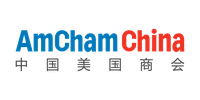Home
*Please note that this training will be conducted in Chinese*
In the rapidly changing policy environment, mastering efficient government relations management strategies is the key to the steady development of enterprises. This training aims to help government affairs practitioners better manage and maintain the relationship between enterprises and government departments, fully and comprehensively carry out specific implementation work, and understand how to more effectively advocate the demands of enterprises to the government. The course will be delivered from the perspective of the work style of multinational enterprises, focus on how to find the right stakeholders, explore how to communicate specifically with the government based on win-win solutions, in order to establish the cooperation mechanism and handle related issues properly.
This course is intended to enhance the following skillsets:
• Key Stakeholder Management Capability: How to define the correct key departments and achieve win-win solutions.
• Establishing Relationships and Solving Problems: How to establish effective government relationships and promote the solving of issues related to business development demands.
• Communication Skills: How to explain the relatively complex corporate affairs and corresponding demands, and express them clearly.
Course Outline (Proportion of Training Time):
1. Identify Key Government Stakeholders (13%)
1) Role of the Chinese government in economic activities
2) Structure of the Chinese government
3) Making of the stakeholder mapping
4) Relationship between government agencies
5) Matrix communication channels
2. Participation Analysis in Government Affairs Related Activities (9%)
6) Research of the "event introduction"
7) Guest level from the government departments and authority level in the industry
8) Relevancy to the enterprise
9) Internal and external communication and judgment
10) Regarding the local engagement activities
3. Develop the Engagement Plan (8%)
11) Equal-level principle of government meetings
12) Framework of the engagement planning
13) Communication goals and strategies
4. Before the Engagement: Meeting Request & More (20%)
14) Example of the meeting request: content and appendix
15) Meeting request to the local government
16) Preparation and application suggestions of the meeting request
17) Briefing book and the pre-meeting briefing
18) Suggested talking points
5. During the Engagement: Dos and Don'ts & More (20%)
19) General dos and don'ts of the government communication
20) Communication principles during high-level meetings
21) The influence of corporate work style on communication
22) Meeting seating arrangement
23) Meeting protocols and procedures
24) Photography arrangement
25) Dinner seating arrangement
26) Dos and don'ts during the dinner
6. After the Engagement: Thank-you Letter & More (12%)
27) Meeting minutes
28) Example of thank-you letters
29) Post-meeting work communication letter
30) Win-win cooperation
31) Suggestions for arranging official visit and inspection
7. Event Speech Support (5%)
32) Senior executives attend government-organized events and deliver speeches
33) General structure and examples of speech
34) Professional and effective cross-cultural communication
8. Mindsets/ Principles of Government Relations Management (13%)
35) Industry characteristics and capability requirements
36) Issue management
37) Management and maintenance of government relations
38) Communicate with local governments
39) Establish the cooperation mechanism
Who Should Attend?
• GA associates and managers that want to have a systematic improvement of their skillsets.
• People who need to have a better understanding of how to fully and comprehensively carry out government relations work, effectively plan for engagement and advocacy activities, and support business objectives.






